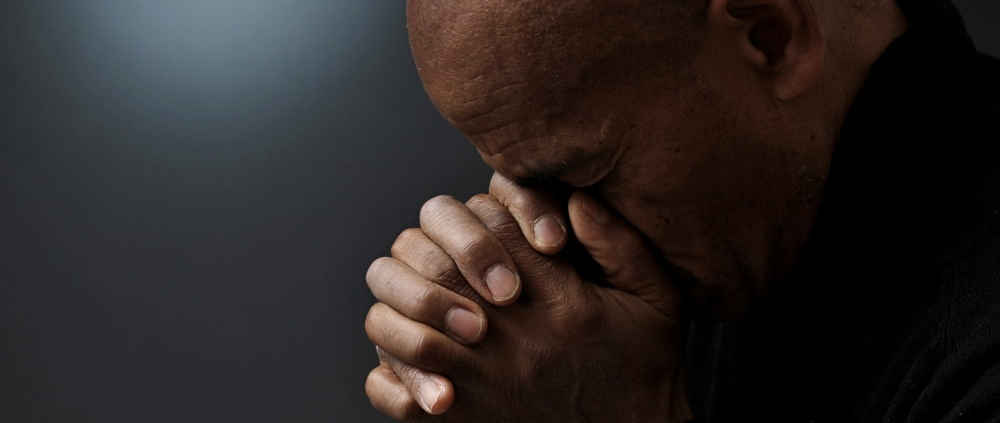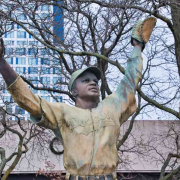The History of Diversity, Equality, and Inclusion in Religion in the United States
Religion in the United States is a tapestry woven from both native traditions and the beliefs brought by settlers from around the world. This analysis delves into the history of diversity, equality, and inclusion in American religious life, examining both homegrown faiths and those introduced by immigrants. It also explores the current state of diversity, equality, and inclusion in these religious communities. Read more at www.askthelawyer.us. To read the complete analysis in our publication, click here, and on our civil rights blog, click here.
Part 1: Native American Religions
Pre-Colonial and Colonial Periods
Before European settlers arrived, the indigenous peoples of what is now the United States practiced a variety of spiritual traditions. These religions were deeply intertwined with nature, the community, and the cosmos.
- Diverse Practices: Native American religions were diverse, reflecting the vast number of tribes and cultures. Common elements included animism, shamanism, and the worship of natural elements and ancestors.
- Colonial Impact: European colonization had a devastating impact on Native American religions. Forced conversions to Christianity, along with cultural assimilation policies, led to a significant decline in the practice of indigenous spiritual traditions.
Modern Era
- Revival Movements: There has been a resurgence of interest in Native American spirituality. Movements such as the Native American Church, which incorporates elements of Christianity with traditional practices like the use of peyote, have gained prominence.
- Legal Protections: Laws such as the American Indian Religious Freedom Act (1978) have sought to protect the rights of Native Americans to practice their religions.
Part 2: Christianity in the United States
Protestantism
Early Settlers
Protestantism arrived with the earliest European settlers, including the Puritans in New England and Anglicans in Virginia.
- Puritans: The Puritans sought to create a “city upon a hill” based on their strict religious principles. This led to a homogenous religious community with little tolerance for other beliefs.
- Anglicans: The Anglican Church, closely tied to the British Crown, was dominant in the southern colonies. However, religious diversity began to increase with the arrival of other Protestant groups.
Great Awakenings
The Great Awakenings were periods of religious revival that swept through the colonies and the early United States.
- First Great Awakening (1730s-1740s): Led by preachers like Jonathan Edwards and George Whitefield, this movement emphasized personal piety and a direct relationship with God. It also led to the growth of new denominations.
- Second Great Awakening (early 19th century): This revival was marked by large camp meetings and a surge in evangelical fervor. It played a crucial role in social reform movements, including abolitionism and temperance.
Diversity within Protestantism
- African American Churches: The Second Great Awakening led to the establishment of independent African American churches, such as the African Methodist Episcopal (AME) Church.
- Immigrant Influence: Waves of immigrants brought various Protestant traditions, including Lutheranism, Methodism, and Presbyterianism.
Catholicism
Early Catholic Settlers
Catholicism was introduced by Spanish and French settlers in regions such as Florida, California, and Louisiana.
- Challenges: Catholics faced significant discrimination in the predominantly Protestant colonies. Anti-Catholic sentiment was widespread, fueled by fears of papal influence.
Growth and Integration
- Irish and German Immigration: The 19th century saw a significant increase in Catholic immigration from Ireland and Germany. This led to the rapid growth of the Catholic Church in the United States.
- Urban Centers: Catholicism became the dominant religion in many urban centers, with parishes often centered around ethnic communities.
Orthodox Christianity
Early 20th Century Immigration
Orthodox Christianity was brought to the United States by immigrants from Eastern Europe and the Middle East.
- Ethnic Parishes: Orthodox parishes were often organized along ethnic lines, reflecting the diverse backgrounds of the immigrants. Greek, Russian, and Serbian Orthodox communities established their own churches.
Modern Developments
- Integration and Growth: While still maintaining their ethnic roots, Orthodox churches have grown and integrated into the broader American religious landscape. The Orthodox Church in America (OCA) has sought to create a more unified American Orthodox identity.
Mormonism
Origins
The Church of Jesus Christ of Latter-day Saints (LDS Church), commonly known as Mormonism, was founded by Joseph Smith in the early 19th century in upstate New York.
- Migration West: Facing persecution, the Mormons migrated westward under the leadership of Brigham Young, eventually settling in Utah.
Modern Era
- Global Expansion: The LDS Church has grown into a global religion, with significant missionary efforts around the world.
- Diversity and Inclusion: The church has made efforts to address issues of diversity and inclusion, including a past ban on African American men holding the priesthood, which was lifted in 1978.
Pentecostalism
Early 20th Century
Pentecostalism emerged in the early 20th century, characterized by a focus on the gifts of the Holy Spirit, including speaking in tongues and healing.
- Azusa Street Revival: The Azusa Street Revival (1906-1915) in Los Angeles, led by African American preacher William J. Seymour, is often considered the birthplace of modern Pentecostalism.
Global Influence
- Growth: Pentecostalism has grown rapidly worldwide, particularly in Latin America and Africa.
- Diversity: The movement is known for its diversity, attracting followers from various racial and ethnic backgrounds.
Part 3: International Religions in the United States
Judaism
Early Jewish Settlers
Jews have been present in America since the colonial period, with the first Jewish congregation established in New York City in 1654.
- Immigration Waves: Significant Jewish immigration occurred in the late 19th and early 20th centuries, primarily from Eastern Europe.
Modern Era
- Diversity within Judaism: American Judaism is diverse, encompassing Orthodox, Conservative, Reform, and Reconstructionist movements.
- Social Justice: Jewish communities have been active in social justice movements, including the Civil Rights Movement.
Islam
Early Muslim Presence
There is evidence of Muslims among African slaves brought to America. However, the first significant Muslim communities were established by immigrants in the late 19th and early 20th centuries.
- Early Immigrants: Early Muslim immigrants came from the Middle East, South Asia, and Eastern Europe.
Modern Era
- Diverse Communities: American Islam is highly diverse, reflecting the global Muslim population.
- Challenges and Progress: Muslims in America have faced significant challenges, particularly post-9/11, but have also made substantial progress in integration and representation.
Hinduism
Early Hindu Presence
Hinduism was introduced to the United States primarily through Indian immigrants in the late 19th and early 20th centuries.
- Swami Vivekananda: Swami Vivekananda’s speech at the 1893 Parliament of the World’s Religions in Chicago is often credited with introducing Hinduism to a broader American audience.
Modern Era
- Growth: Hinduism has grown significantly in the United States, with temples and cultural centers established in many cities.
- Interfaith Dialogue: Hindu communities have been active in interfaith dialogue and cultural exchange.
Buddhism
Early Buddhist Presence
Buddhism was introduced to the United States by Asian immigrants in the 19th century, particularly from China and Japan.
- Japanese Internment: During World War II, many Japanese Buddhists were interned, disrupting their communities.
Modern Era
- Diversity within Buddhism: American Buddhism is diverse, including Zen, Tibetan, and Theravada traditions.
- Mindfulness Movement: Buddhism has significantly influenced the American mindfulness and meditation movement.
Sikhism
Early Sikh Presence
Sikhism was introduced to the United States by Indian immigrants in the early 20th century, primarily settling in California.
- Challenges: Sikhs have faced significant challenges, including discrimination and violence, often due to being mistaken for Muslims post-9/11.
Modern Era
- Community Growth: The Sikh community has grown, establishing gurdwaras (Sikh temples) across the country.
- Advocacy: Sikh organizations have been active in advocacy and education to combat discrimination and promote understanding.
Current State of DEI in American Religious Communities
Christianity
Protestantism
- Racial Diversity: Many Protestant denominations have made efforts to increase racial diversity and address systemic racism. However, significant disparities remain, particularly in leadership positions.
- Gender Equality: While some denominations ordain women and support gender equality, others continue to restrict leadership roles for women.
- LGBTQ+ Inclusion: Attitudes toward LGBTQ+ inclusion vary widely among Protestant denominations, with some embracing LGBTQ+ members and others maintaining traditional stances.
Catholicism
- Racial Diversity: The Catholic Church in the United States is increasingly diverse, with significant Latino and Asian populations.
- Gender Equality: The Catholic Church does not ordain women, leading to ongoing debates about gender equality within the church.
- LGBTQ+ Inclusion: The Catholic Church maintains traditional teachings on sexuality, but there is growing advocacy for greater inclusion and acceptance of LGBTQ+ individuals.
Orthodox Christianity
- Ethnic Diversity: Orthodox churches in the United States are increasingly diverse, though many retain strong ethnic identities.
- Gender Equality: The Orthodox Church does not ordain women, and gender roles remain traditional.
- LGBTQ+ Inclusion: Orthodox Christianity generally maintains traditional views on sexuality, with limited inclusion of LGBTQ+ individuals.
Mormonism
- Racial Diversity: The LDS Church has made efforts to increase racial diversity, though historical issues, such as the past ban on African American men holding the priesthood, continue to affect perceptions.
- Gender Equality: The LDS Church does not ordain women, and gender roles within the church remain traditional.
- LGBTQ+ Inclusion: The LDS Church maintains traditional teachings on sexuality, though there is ongoing dialogue and advocacy for greater inclusion.
Pentecostalism
- Racial Diversity: Pentecostalism is highly diverse, with significant African American, Latino, and international communities.
- Gender Equality: Many Pentecostal denominations ordain women and support gender equality, though practices vary.
- LGBTQ+ Inclusion: Attitudes toward LGBTQ+ inclusion vary, with some Pentecostal churches embracing LGBTQ+ members and others maintaining traditional stances.
Judaism
- Racial Diversity: Jewish communities are increasingly diverse, including significant populations of Jews of color.
- Gender Equality: Most Jewish denominations, including Reform and Conservative Judaism, ordain women and support gender equality. Orthodox Judaism maintains traditional gender roles.
- LGBTQ+ Inclusion: Reform and Conservative Judaism generally embrace LGBTQ+ inclusion, while Orthodox Judaism maintains traditional teachings on sexuality.
Islam
- Racial Diversity: American Islam is highly diverse, reflecting the global Muslim population.
- Gender Equality: Gender roles and the status of women vary widely within American Muslim communities. Some communities are progressive, while others maintain traditional practices.
- LGBTQ+ Inclusion: LGBTQ+ inclusion remains a contentious issue within American Islam, with attitudes varying widely among different communities.
Hinduism
- Racial Diversity: The Hindu community in the United States is primarily of Indian descent but is becoming increasingly diverse.
- Gender Equality: Hindu communities vary in their approaches to gender equality, with some embracing progressive values and others maintaining traditional roles.
- LGBTQ+ Inclusion: Attitudes toward LGBTQ+ inclusion vary, with some Hindu communities embracing LGBTQ+ members and others maintaining traditional stances.
Buddhism
- Racial Diversity: American Buddhism is diverse, including Asian American communities and converts from various backgrounds.
- Gender Equality: Many American Buddhist communities support gender equality and ordain women. However, traditional gender roles persist in some traditions.
- LGBTQ+ Inclusion: Buddhism generally embraces LGBTQ+ inclusion, with many American Buddhist communities actively supporting LGBTQ+ rights.
Sikhism
- Racial Diversity: The Sikh community in the United States is primarily of Indian descent but is becoming more diverse.
- Gender Equality: Sikhism promotes gender equality, though cultural practices may vary.
- LGBTQ+ Inclusion: Attitudes toward LGBTQ+ inclusion vary within the Sikh community, with ongoing dialogue and advocacy for greater acceptance.
New Barriers and Challenges
Legislative and Social Barriers
Anti-Muslim Sentiment
- Post-9/11: Muslims in America have faced significant discrimination and violence, particularly post-9/11. Legislative measures such as the travel ban have exacerbated these challenges.
Anti-Transgender Legislation
- State Laws: Some states have passed or proposed laws that restrict the rights of transgender individuals, impacting their ability to participate fully in religious communities.
Economic and Structural Barriers
Funding Inequities
- Resource Allocation: Religious communities in economically disadvantaged areas often lack the resources to fully support their members and promote DEI initiatives.
Cultural and Theological Barriers
Traditional Beliefs
- Resistance to Change: Traditional beliefs and practices can sometimes impede efforts to promote DEI. This is particularly evident in issues related to gender and LGBTQ+ inclusion.
Efforts to Promote DEI in Religious Communities
Interfaith and Intra-faith Initiatives
Dialogue and Collaboration
- Interfaith Dialogues: Many religious communities participate in interfaith dialogues to promote understanding and cooperation. These efforts can help address common DEI challenges and promote mutual respect.
- Intra-faith Initiatives: Within religious traditions, there are often movements and organizations dedicated to promoting DEI. For example, Jewish organizations such as Keshet advocate for LGBTQ+ inclusion within the Jewish community.
Education and Advocacy
Awareness and Training
- DEI Training: Many religious organizations offer DEI training for clergy and lay leaders to raise awareness and promote inclusive practices.
- Educational Programs: Religious schools and educational programs increasingly incorporate DEI principles into their curricula.
Policy and Structural Changes
Institutional Reforms
- Policy Changes: Some religious institutions have implemented policy changes to promote DEI, such as adopting inclusive language, supporting diverse leadership, and creating safe spaces for marginalized groups.
- Structural Reforms: Structural changes, such as the establishment of diversity councils and the inclusion of diverse voices in decision-making processes, can help promote DEI.
Conclusion
The history of diversity, equality, and inclusion in religion in the United States reflects broader societal changes and struggles. From the early exclusion of marginalized groups to modern efforts to promote DEI, religious communities have been both a microcosm of and a catalyst for change. While significant progress has been made, ongoing challenges remain, including legislative, economic, cultural, and theological barriers. Continued efforts to promote DEI through dialogue, education, advocacy, and policy changes are essential to creating more inclusive and equitable religious communities in the United States.








Leave a Reply
Want to join the discussion?Feel free to contribute!